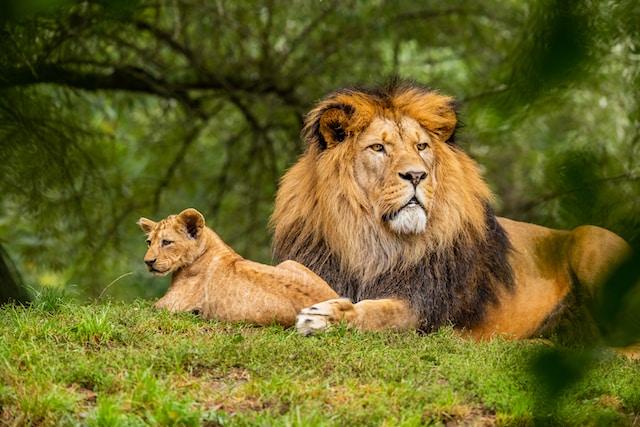Main Responsibilities and Required Skills for a Wildlife Biologist

A Wildlife Biologist is a professional who studies and manages wildlife populations, habitats, and ecosystems. These individuals play a crucial role in conservation efforts, understanding animal behavior, and conducting scientific research related to wildlife. In this blog post, we will describe the primary responsibilities and the most in-demand hard and soft skills for Wildlife Biologists.
Get market insights and compare skills for other jobs here.
Main Responsibilities of a Wildlife Biologist
The following list describes the typical responsibilities of a Wildlife Biologist:
Advise
Advise on Provincial and Federal legislation pertaining to Species at Risk (SAR).
Analyze
Analyze data and develop wildlife management plans.
Apply
Apply statistical methods to analyze and interpret wildlife data.
Assess
Assess the health and condition of wildlife populations.
Assess the impact of climate change on wildlife habitats and ecosystems.
Assist in
Assist in developing and maintaining internal and external Client contacts.
Assist in the acquisition of wildlife related permits based on project requirements.
Assist in the enforcement of wildlife protection laws and regulations.
Assist in the planning and conduct of wildlife inventory programs on a project related basis.
Capture
Capture, handle, and safely immobilize animals for research purposes.
Collaborate with
Collaborate with government agencies and policymakers on wildlife management policies.
Collaborate with other professionals and organizations on wildlife conservation projects.
Collaborate with stakeholders to develop sustainable wildlife management strategies.
Collect
Collect and analyze biological samples, such as blood or tissue samples.
Communicate
Communicate with clients regarding work specific tasks.
Conduct
Conduct environmental impact assessments for proposed development projects.
Conduct field surveys to gather data on wildlife populations and their habitats.
Conduct necropsies to investigate causes of wildlife mortality.
Conduct population density estimates and biodiversity assessments.
Conduct public outreach programs and educational workshops.
Conduct wildlife population surveys using remote sensing techniques.
Contribute
Contribute and participate within the company's highly collaborative corporate culture.
Design
Design and implement research projects to study specific wildlife species.
Develop
Develop and implement habitat restoration and management strategies.
Develop and implement wildlife monitoring programs.
Educate
Educate the public and raise awareness about wildlife conservation.
Evaluate
Evaluate the effectiveness of wildlife management practices.
Evaluate the environmental impact of hunting or fishing activities.
Identify
Identify and monitor endangered or threatened species.
Lead
Lead and direct junior staff in field activities.
Lead salvage efforts targeted to western toad and coastal tailed frog.
Manage
Manage and analyze large datasets related to wildlife populations.
Manage, plans, and lead coastal tailed frog salvage field programs.
Manage tasks according to approved scopes of work.
Monitor
Monitor and track animal behavior, movements, and migration patterns.
Plan
Plan and lead wildlife programs on major projects.
Prepare
Prepare reports, scientific papers, and presentations based on research findings.
Provide
Provide expertise and technical advice during AER public hearings.
Provide high quality and independent review for projects.
Provide mentorship to aspiring wildlife biologists.
Provide recommendations for wildlife conservation and management actions.
Provide technical guidance to the field team through supervision, training, and mentoring.
Provide technical leadership on the wildlife components of our projects within a team environment.
Specific
Specific business development activities will include participation in the development of proposals.
Stay up-to-date with
Stay up-to-date with advancements in wildlife research techniques and technologies.
Train
Train, mentor and supervise the work of biological technicians and other staff.
Use
Use computer software and modeling tools for data analysis and simulations.
Use GPS and GIS technology for mapping and spatial analysis.
Work
Work equipment provided according to the season (boot, bib, helmet, gloves, etc.).
Work in a manner that promotes safety for yourself and others around you.
Most In-demand Hard Skills
The following list describes the most required technical skills of a Wildlife Biologist:
Knowledge of wildlife biology, ecology, and conservation principles.
Proficiency in field research techniques, including survey methods and sampling.
Competence in data collection and analysis using statistical software.
Understanding of wildlife population modeling and simulation techniques.
Skill in operating remote sensing and GPS/GIS technology.
Proficiency in using computer software for data analysis and visualization.
Knowledge of environmental impact assessment methods and regulations.
Understanding of wildlife tracking and telemetry techniques.
Competence in wildlife capture and handling protocols.
Knowledge of species identification and taxonomy.
Skill in conducting habitat assessments and ecosystem monitoring.
Understanding of wildlife health assessment and disease surveillance.
Proficiency in wildlife population estimation methods.
Knowledge of wildlife habitat management techniques.
Competence in data management and database systems.
Understanding of ecological modeling and simulation software.
Proficiency in Geographic Information Systems (GIS) software.
Knowledge of molecular biology techniques for wildlife research.
Competence in using specialized software for wildlife data analysis.
Understanding of wildlife management regulations and policies.
Most In-demand Soft Skills
The following list describes the most required soft skills of a Wildlife Biologist:
Excellent communication and interpersonal skills.
Strong problem-solving and critical thinking abilities.
Effective teamwork and collaboration.
Adaptability and flexibility in various field and research environments.
Time management and organizational skills.
Attention to detail and accuracy in data collection and analysis.
Ability to work independently and take initiative.
Passion for wildlife conservation and environmental stewardship.
Ethical and responsible conduct in wildlife research and management.
Ability to convey complex scientific concepts to a non-technical audience.
Conclusion
In conclusion, a Wildlife Biologist is responsible for understanding and managing wildlife populations, habitats, and ecosystems. Their main responsibilities include conducting field research, analyzing data, developing conservation plans, and raising awareness about wildlife conservation. Alongside technical skills in wildlife biology, data analysis, and research techniques, soft skills such as communication, problem-solving, and adaptability are essential for success in this role.

